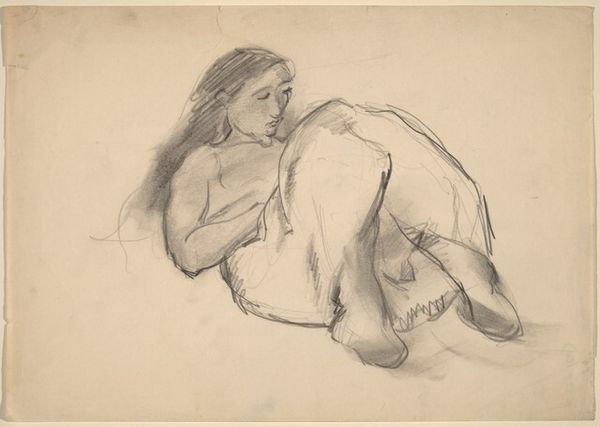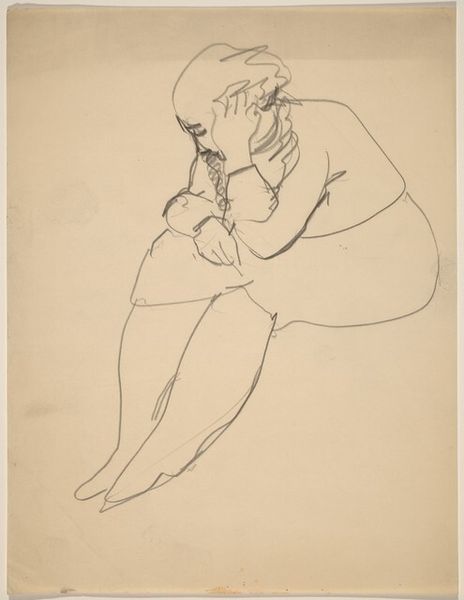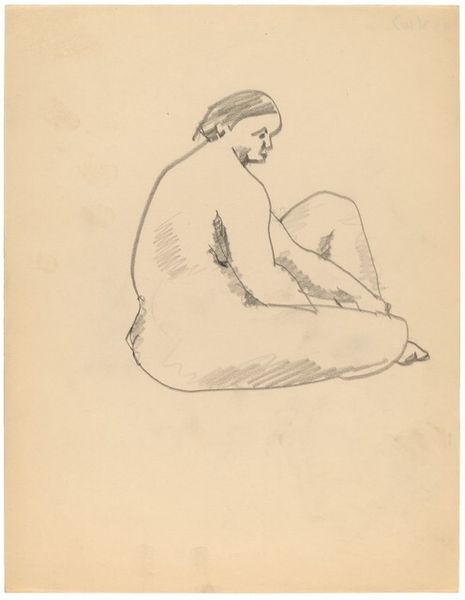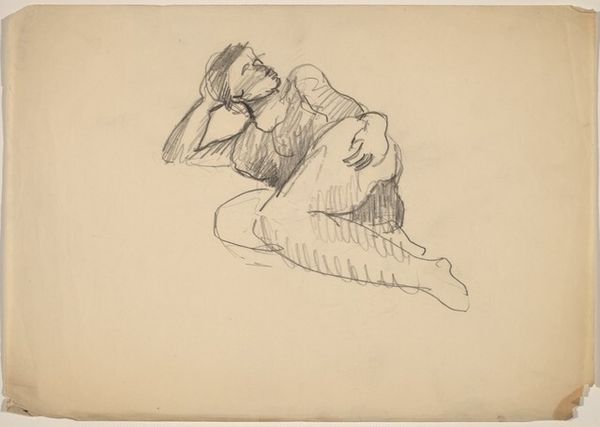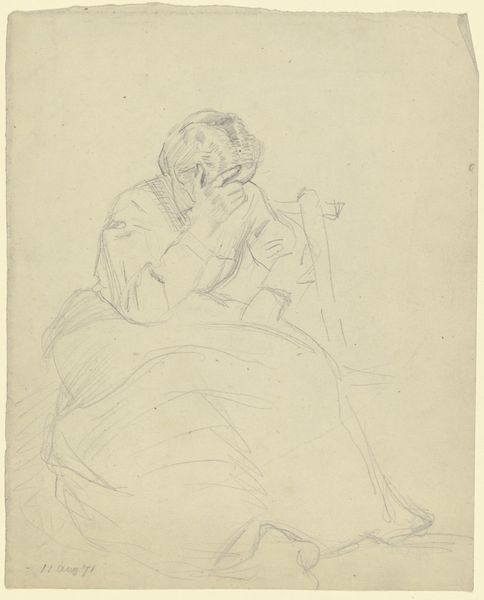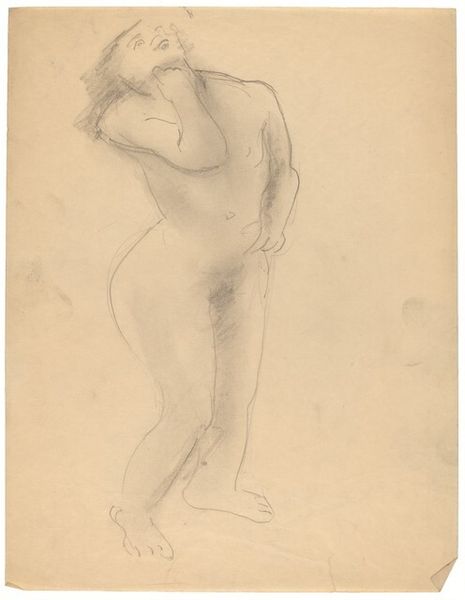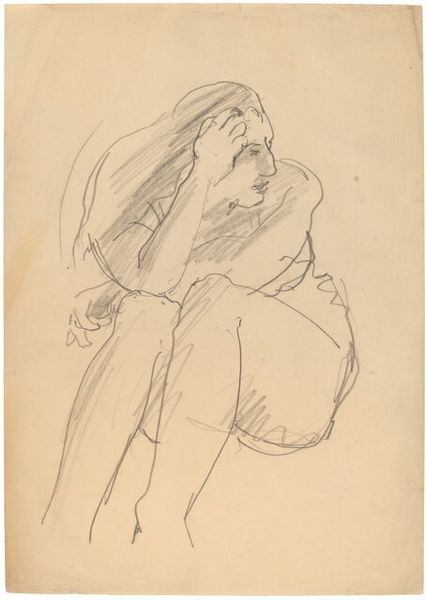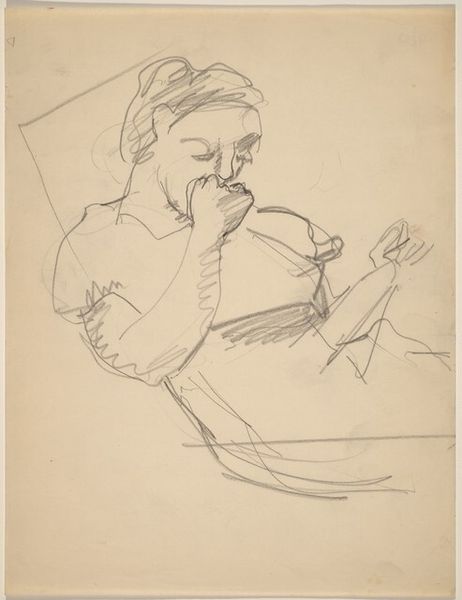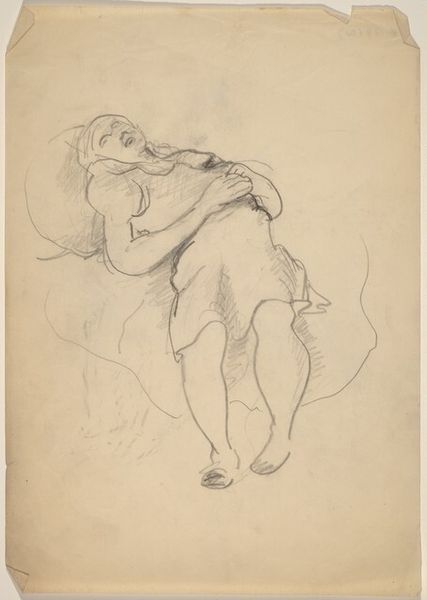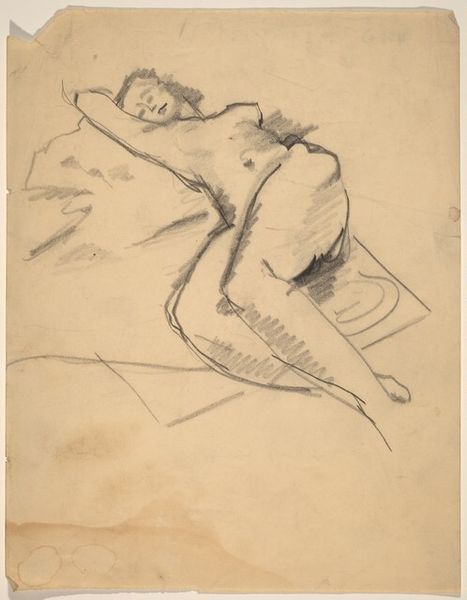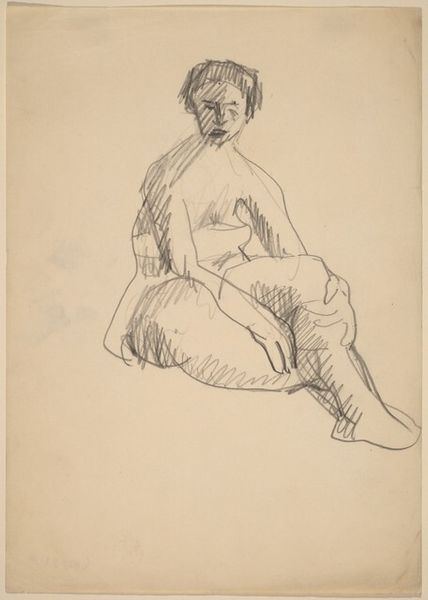
drawing, pencil
#
drawing
#
figuration
#
pencil
#
nude
Dimensions: overall: 27.7 x 21.5 cm (10 7/8 x 8 7/16 in.)
Copyright: National Gallery of Art: CC0 1.0
Editor: Here we have Mark Rothko’s pencil drawing, “Woman Wearing Loose Robe, Crouching.” It’s all soft lines and shaded areas. There’s a quiet vulnerability to the piece. How do you interpret this work in relation to the artist’s better known color field paintings? Curator: It's tempting to see this drawing, with its focus on the figure, as a separate entity from Rothko's later abstract work. But consider the art world's historical biases. For years, figurative art was considered inherently 'serious' while abstract art was often seen as decorative, lacking substance. Editor: So you’re suggesting we see them connected? Curator: Absolutely. What if this crouching figure represents Rothko’s initial struggle for recognition, conforming to figurative traditions before breaking free? The loose robe might symbolize societal expectations, something he shed to pursue abstraction. How do you see the role of art institutions in this transformation? Did galleries and critics expect Rothko to continue in this vein? Editor: It’s fascinating to consider how societal pressure might have impacted Rothko’s artistic evolution! Almost as if figuration held him down somehow, while abstraction granted him artistic liberation. Curator: Exactly. And it challenges our own presumptions. Does abstraction lack a social or political dimension just because it's non-representational? I wonder if the ‘seriousness’ associated with figure drawing had its own societal biases? Editor: Thinking about how art and its reception is impacted by the art world and greater society makes me consider its power, not just as an individual creation but as a societal creation, too. Curator: Indeed. And that understanding allows us to see works like this Rothko drawing, not as a mere preliminary sketch, but as a reflection of a specific cultural and artistic moment.
Comments
No comments
Be the first to comment and join the conversation on the ultimate creative platform.
